The Top 10 Reserves for Filming Birds in Colombia
Production Tips for Filming Birds in Colombia
Our Colombia production company’s Top 10 Reserves for Filming Birds in Colombia
Colombia is a paradise for nature filmmaking and photography. As the world's second most biodiverse country, there are a wealth of wildlife and spectacular landscapes to be filmed. Colombia is especially bird-diverse: no other country has recorded more bird species; with almost 2,000 registered, Colombia is home to nearly 20% of all the bird species on earth.
But seeing birds is one thing; filming then is quite another! Although some rare and unique species make it easy – perching out in the open and singing their hearts out – it's not always a walk in the park filming birds in Colombia. You need to know the best locations, work with the top local guides, and set up in the perfect spots to capture those elusive endemics on film.
Our Colombia production company has worked on many bird-related documentary projects and is currently producing a birding YouTube series (more on that). We know the best spots in Colombia for filming birds, we work with the best local guides, and we can take you where you need to go.
Our Top 10 Nature Reserves
Montezuma Road
The iconic Montezuma Road is one of Colombia's top birding destinations: this stretch of unpaved road rises from 1,500M/4900ft above sea level., passes through pristine cloud forest, and ends at 2,600M/8500ft with commanding views of Cerro Tatama, the highest peak in the Colombian Western Andes. Almost 600 bird species have been recorded in the area. The road passes through such a diverse mix of habitat and altitude that you can observe a different mixture of species depending on which part you visit.
Montezuma's highlight species is undoubtedly the stunning Gold-ringed Tanager, a chunky endemic species of the western Andean cloud forests, which is easily a 'Top 10' species for any birder visiting Colombia. It's surprisingly common at Montezuma and is easily filmed moving with mixed flocks through the lush vegetation. Other rare and range-restricted species that can be filmed here include the Chestnut-bellied Flowerpiercer, Cloud-forest Pygmy-Owl, Beautiful Jay, Fulvous-dotted Treerunner, Black-and-gold Tanager, and more than 20 species of hummingbird. Filming birds here is more straightforward than at many other cloud forest locations. Why? Because at Montezuma, the road winds upwards in a series of switchbacks, meaning that you are almost always at eye-level with the canopy on one side, making it far easier to film species that tend to stick to the treetops.
Our Colombia production company filmed a short documentary at Montezuma for our project, The Birders, which you can see below for a taste of the spectacular birding that awaits you there.
Los Flamencos Flora and Fauna Sanctuary
This coastal national park consists of dry forests and brackish coastal lagoons in the Caribbean desert region of La Guajira. It's most famous for the large population of American Flamingos that give the parks its name, but there's a lot more to this park than just those leggy pink stars. Don't get us wrong, filming flamingos at Los Flamencos is a considerable part of its appeal – you can get close to flocks of the birds in the lagoons on small sailboats piloted by local fishermen. These boats are powered only by the wind, so they don't startle the flamingos or the thousands of other water birds feeding in the shallow waters.
The dry forest habitat is home to many Guajira endemic species, which can only be found in these coastal deserts of northern Colombia and Venezuela. From the punky-crested Vermillion Cardinal to the rare Buffy Hummingbird, there are many unique species to be filmed here. Happily, filming birds in Los Flamencos is less complicated than other reserves, thanks to the sparse vegetation and preponderance of open perches.
WhereNext filmed a segment of our feature-length documentary film The Birders at Los Flamencos. We have an excellent relationship with the best local Wayuu Indigenous guides and knowledge of securing permits to film in this protected national park.
El Dorado Reserve
El Dorado Reserve is one of Colombia's top birding destinations for international birders due to its privileged location in the Sierra Nevada de Santa Marta Mountains, a globally-important hotspot for endemic bird species. In this one coastal mountain range alone, there are 23 endemic bird species; and at El Dorado and the nearby San Lorenzo Ridge, it's possible to film around 17 of those species (the others are either extremely rare or live at much higher and inaccessible altitudes), including the Santa Marta Parakeet, Santa Marta Antpitta, and the recently-discovered Santa Marta Screech-Owl.
The reserve lodge is a comfortable and well-appointed base for filming in the mountains, with a stunning view over the Caribbean Sea and foothills of the Santa Marta range. From the San Lorenzo Ridge, you can enjoy a unique 360-degree panorama that takes in snow-capped peaks and the Caribbean. Filming birds here is relatively straightforward: it's a well-established reserve with clear target species, and the local guides know where to find the endemic birds.
WhereNext filmed part of The Birders around El Dorado, where we captured some of the best footage ever recorded of the parakeet, owl, and the Santa Marta Woodstar.
The snowcapped peaks of the Sierra Nevada de Santa Marta Mountains seen from the bird-rich San Lorenzo Ridge
Las Bangsias Natural Reserve
Located on the megadiverse road from the Andes down to the Pacific coast in Colombia's southern department of Narino, Las Bangsias Natural Reserve is a videographer's dream filming location for shooting birds – the reserve is arguably the best place in Colombia to film eye-level footage of the otherwise-elusive Moss-backed Tanager. The road conditions are similar to Montezuma, meaning that you always have the canopy at eye-level on one side of the trail, meaning that rare and colorful tanagers like Scarlet-and-white Tanager are comparatively easy to film. Toucan Barbet and Black Solitaire are also regularly encountered here, as well as the localized Chocó Tyrannulet.
Our expert team of birders has scouted extensively in this region and recommends Bangsias as the top bird filming destination in the Nariño region.
Chingaza National Park
This high-altitude Andean National Park is perched high above the Colombian capital of Bogota and is predominantly made up of paramo, an ecosystem unique to the tropical Andes, 50% of which is found in Colombia. Paramos are Andean tundra landscapes and may seem wild and bleak at first glance, but shelter a massive quantity of endemic species, including many unique birds. The star of the show is undoubtedly the Green-bearded Helmetcrest, an endemic high-altitude hummingbird with a bright-green beard and punky mohawk. Other notable birds that can be filmed in the park include the endemic Brown-breasted Parakeet, Muisca Antpitta, Blue-throated Starfrontlet, and Silvery-throated Spinetail. It's also possible to film exciting and charismatic species like the Golden-headed Quetzal, Black-billed Mountain-Toucan, Andean Condor, and Black-chested Buzzard Eagle. With a lot of luck, you may even encounter a Spectacled Bear.
WhereNext has experience filming in the often harsh conditions of the paramo as part of our work with Columbia Sportswear, testing outdoor gear in the Chingaza moorlands. We also filmed the short documentary A Trek to Peace in these wild landscapes and have produced short bird videos filmed in the paramo and sub-Andean forests of the park.
El Paujil Reserve
This natural reserve in the mega-biodiverse Magdalena Valley region is an excellent site for filming endemic and highly range-restricted species such as White-mantled Barbet, Beautiful Woodpecker, and Sooty Ant-Tanager. The main reason to film birds at El Paujil Reserve is the eponymous star of the show: the critically-endangered and endemic Blue-billed Curassow or Paujil as it is known locally.
It is estimated that perhaps fewer than 100 Blue-billed Curassows remain in the wild, and this reserve is home to the largest population. Furthermore, the curassows of El Paujil Reserve have become remarkably easy to film in recent years: wild individuals started visiting the reserve gardens years ago, feed on seed out down by the wardens. Now as many as 15 individuals will regularly visit and can be observed and filmed from meters away. There's nowhere else on earth where you can film this exceedingly rare bird at such close range.
Finca Florida – KM. 18
KM. 18 is a short stretch of cloud forest road on the main highway from Cali to the Pacific coast city of Buenaventura. In recent years it's become known as an essential birding hotspot in southern Colombia, and several bird lodges have opened up along the road. The best of the bunch is the recently-opened Finca Florida. Owner Javier is not only extremely welcoming and accommodating; he has also designed his reserve with bird photographers in mind: the perches at the bird feeding stations are natural and at eye-level, making it simple to obtain high-quality images of stunning species like the endemic Multicolored Tanager, Red-headed Barbet, Crimson-rumped Toucanet, and Saffron-crowned Tanager. He also has a feeding station for the shy and endemic Chestnut Wood-Quail, so you have a rare opportunity to film this otherwise tricky species in a natural setting.
Dona Dora
This roadside restaurant has achieved birding fame in recent years thanks to an enormous ficus fruiting tree in the backyard, which attracts many regional specialty species, including Toucan Barbet, Silver-throated Tanager, Black-chinned Mountain-Tanager, and Black Solitaire. The house now counts on a third-floor observation deck, allowing for walk-away eye-level views of the star of the show, the Toucan Barbet. These days, you can see as many as 8 of these startlingly colorful birds together from the breakfast table, so filming them is simply a question of turning up and waiting patiently. Throw in a host of beautiful hummingbird species and the best cheese empanadas in Colombia, and you've got the recipe for an incredible filming location for Colombian birds. Dona Dora's place is also a short drive from the previous site, so combining these locations for a birding filming weekend is logistically easy.
A stunning Toucan Barbet at Doña Dora’s bird observatory
A juvenile Ornate Hawk-eagle at Cali’s Km. 18
Altagracia Reserve
The vast Eastern Plains region isn't a landscape typically associated with Colombia: rolling, seasonally-flooded grasslands, and gallery forest. However, it's perhaps the best region in the country for filming large gatherings of birds, particularly flocks of wetland species like Scarlet Ibis, Orinoco Goose, Wood Stork, Jabiru, and whistling-ducks. It's entirely possible to film a dozen aquatic bird species in the same frame, particularly in the dry season, when these birds gather in huge numbers around watering holes. On a good day, you can film all of Colombia's resident ibis and kingfisher species in the same stretch of lakeside forest.
Altagracia Reserve is home to thousands of Orinoco Geese and rarer species such as Agami Heron, Zigzag Heron, Point-tailed Palmcreeper, and many more. It's also possible to film giant otters, giant anteaters, tamanduas, anacondas, and even jaguars or pumas, and the sunsets here are as beautiful as any you'll find in Colombia.
WhereNext has worked on several natural history documentary projects in the region and filmed at Altagracia Reserve with our clients Awake Travel and USAID, so we are familiar with the sometimes-complicated logistics of shooting in this isolated corner of Colombia. Our team of bird experts also has extensive research experience on this reserve and has even discovered new species for the region there.
Jardin, Antioquia
The picturesque little Coffee Region town of Jardin, Antioquia, sits in the central Colombian Andes between Medellin and Manizales. The town alone is worth the trip: a colorful main square surrounded by friendly cafes and trout restaurants, nestled in a lush valley of coffee plantations and native forest. Yet, it's also the site of the best Andean Cock-of-the-rock lekking site in the entire country. These strange and surreal red birds gather together at leks to dance, whoop, and generally cause a stir in the hope of attracting a female. They can be filmed at this site from a distance of just a couple of meters, making for genuinely stunning footage. And the best part? The lek is a gentle five-minute stroll from the tranquil main square. The mountains above the town are also home to the Yellow-eared Parrot Reserve, where this rare Colombian endemic parrot can be found in healthy numbers.
Our scouting team has worked in Jardin, Antioquia, on bird documentary projects, including filming at the Cock-of-the-rock lek site (Photos below by Julian Manrique).
Work With an Experienced Colombia Production Company
Filming birds in Colombia can be both thrilling and challenging. You want to work with the experts.
Contact us now to discuss how we can make your next natural history filmmaking project in Colombia a success.
Read more about our Colombia Production Company here.





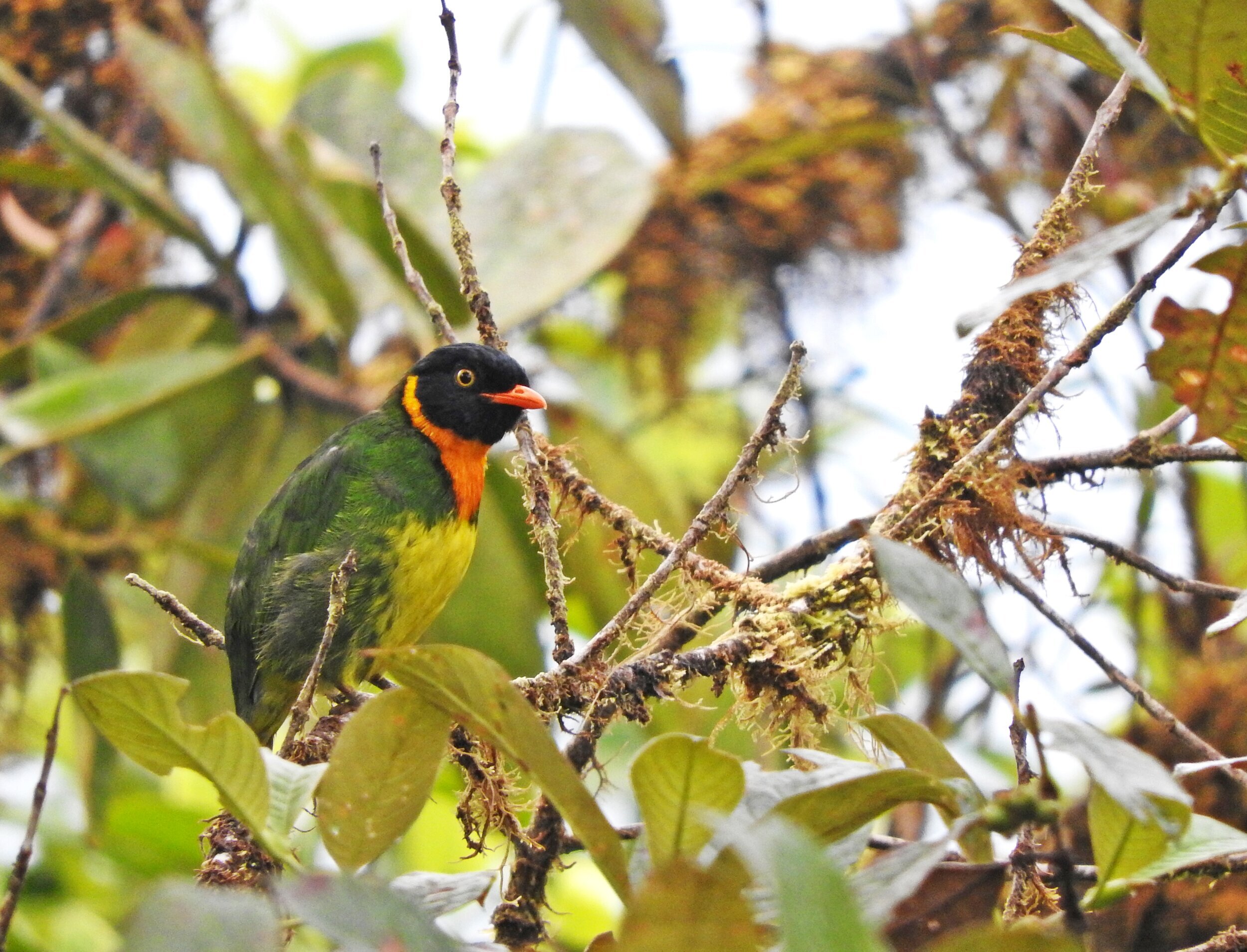
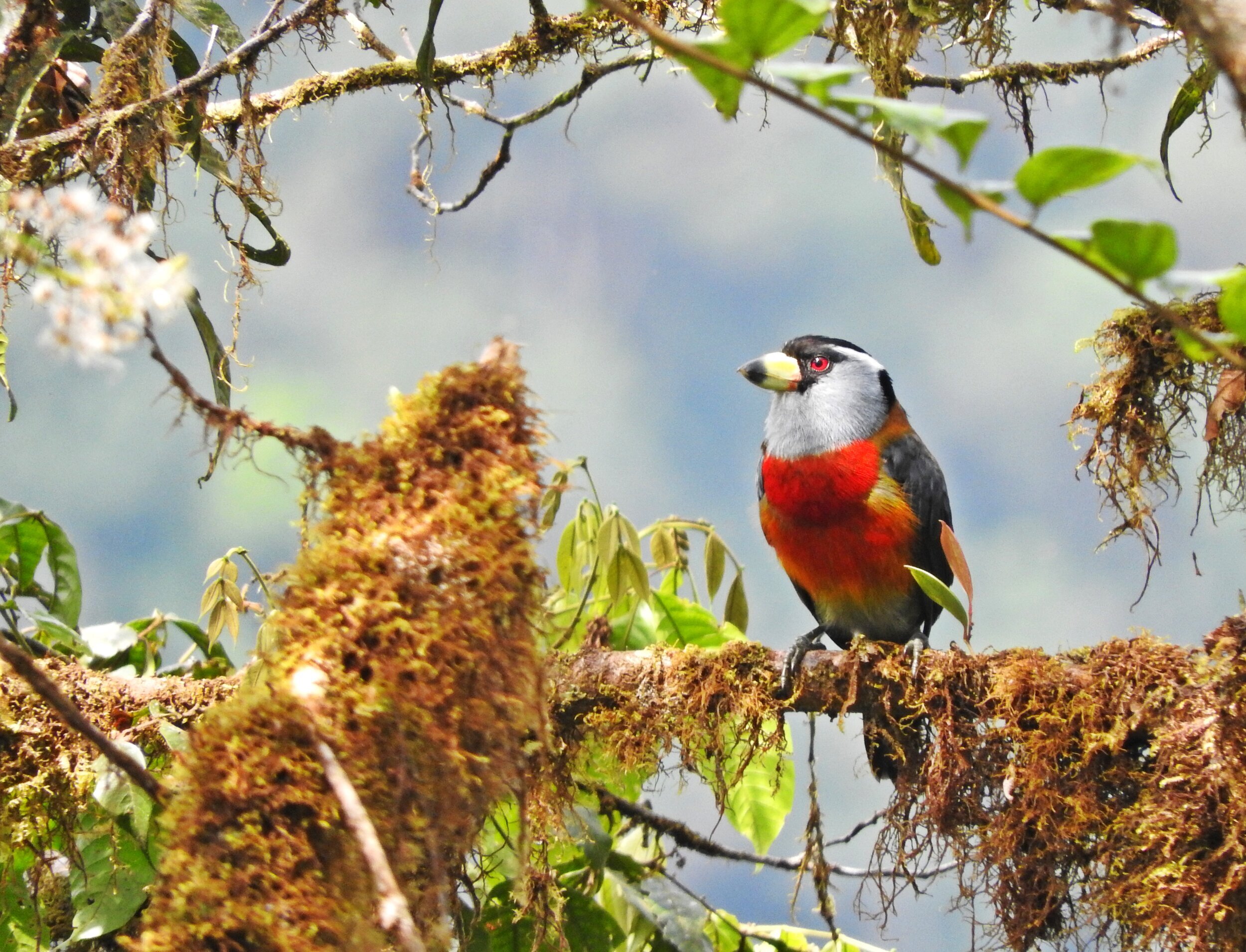
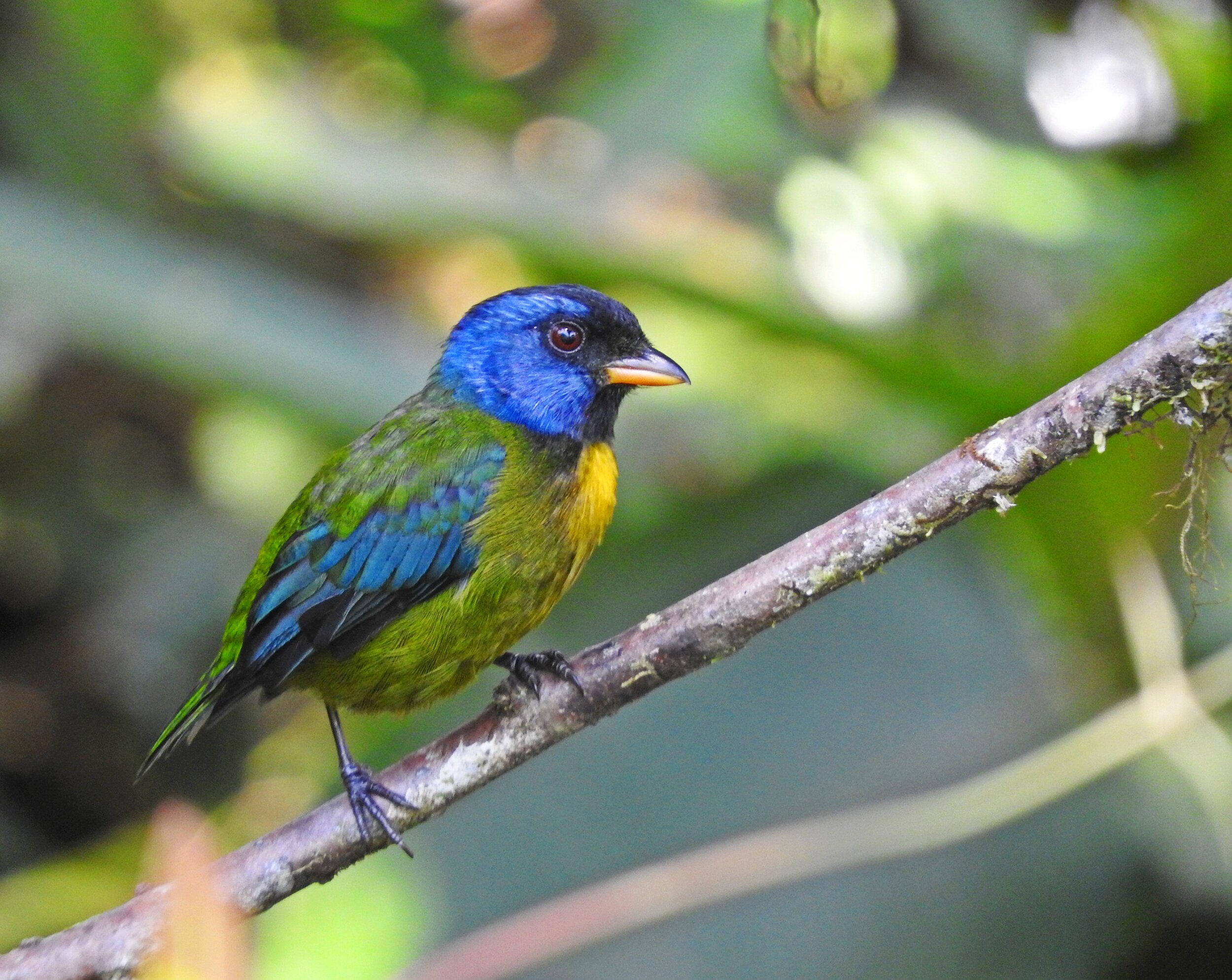


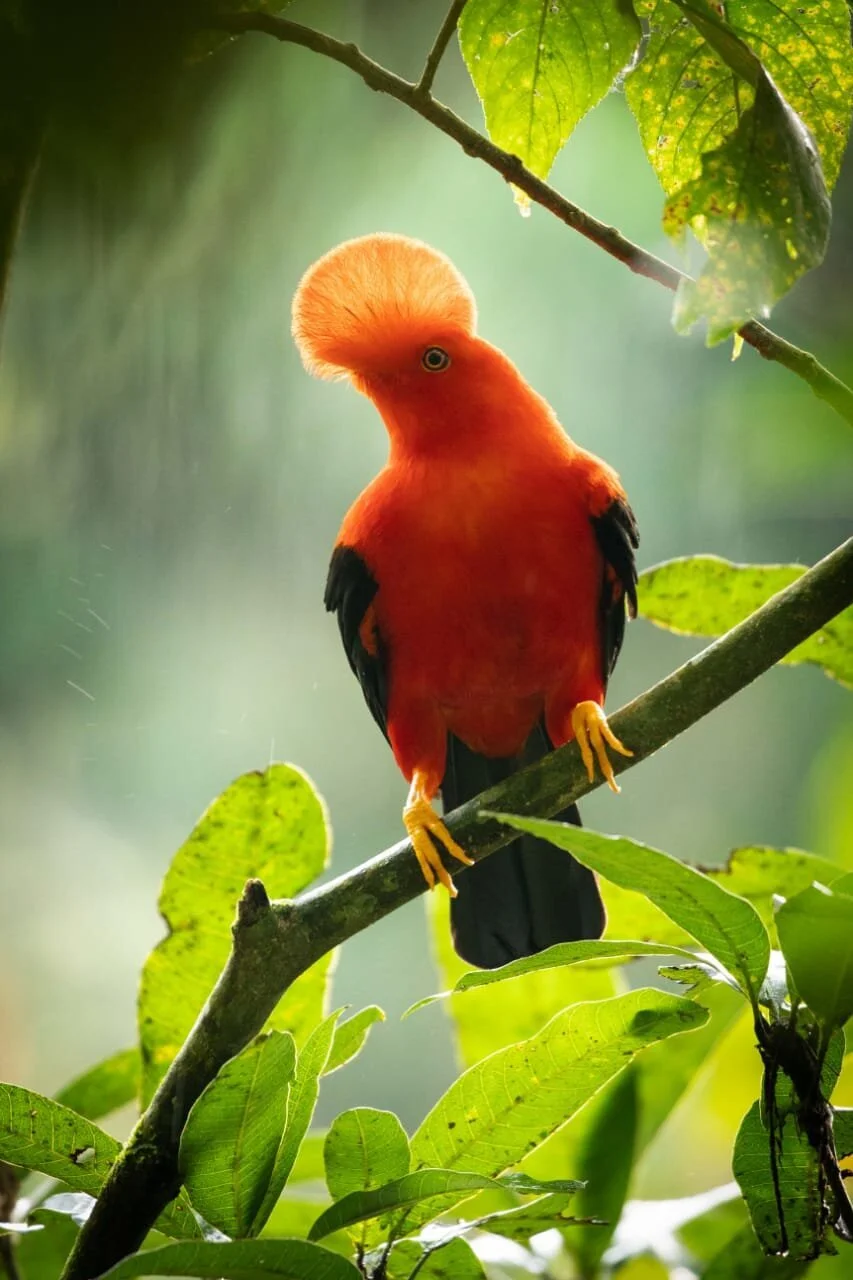
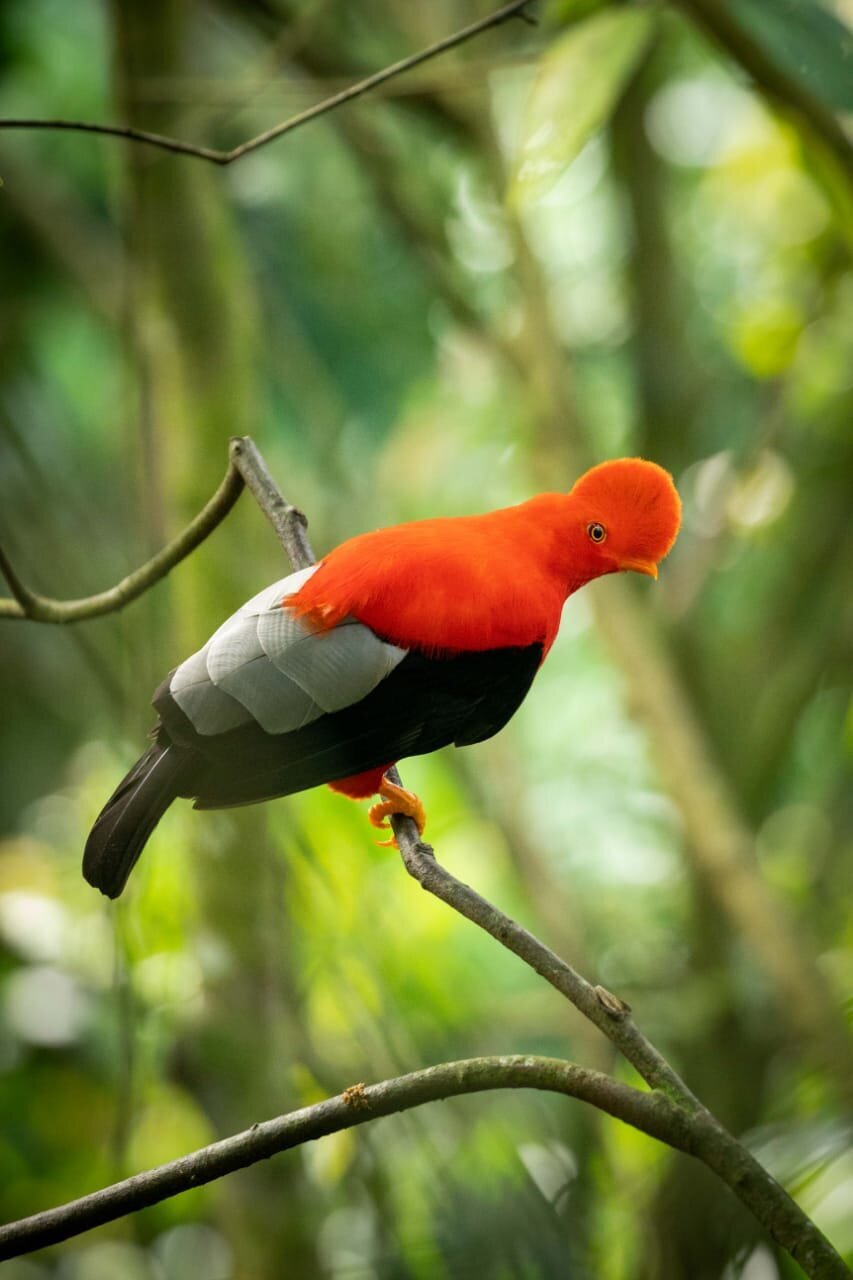
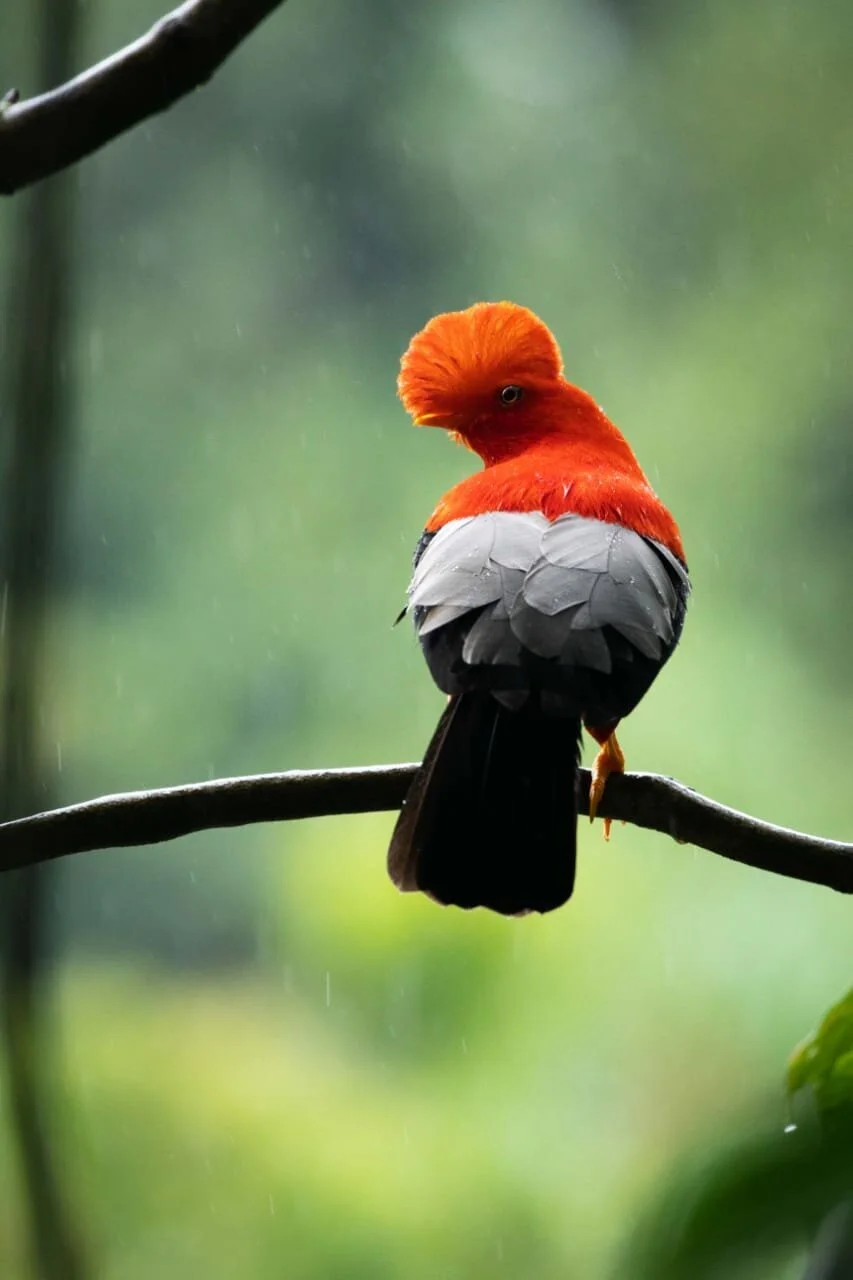




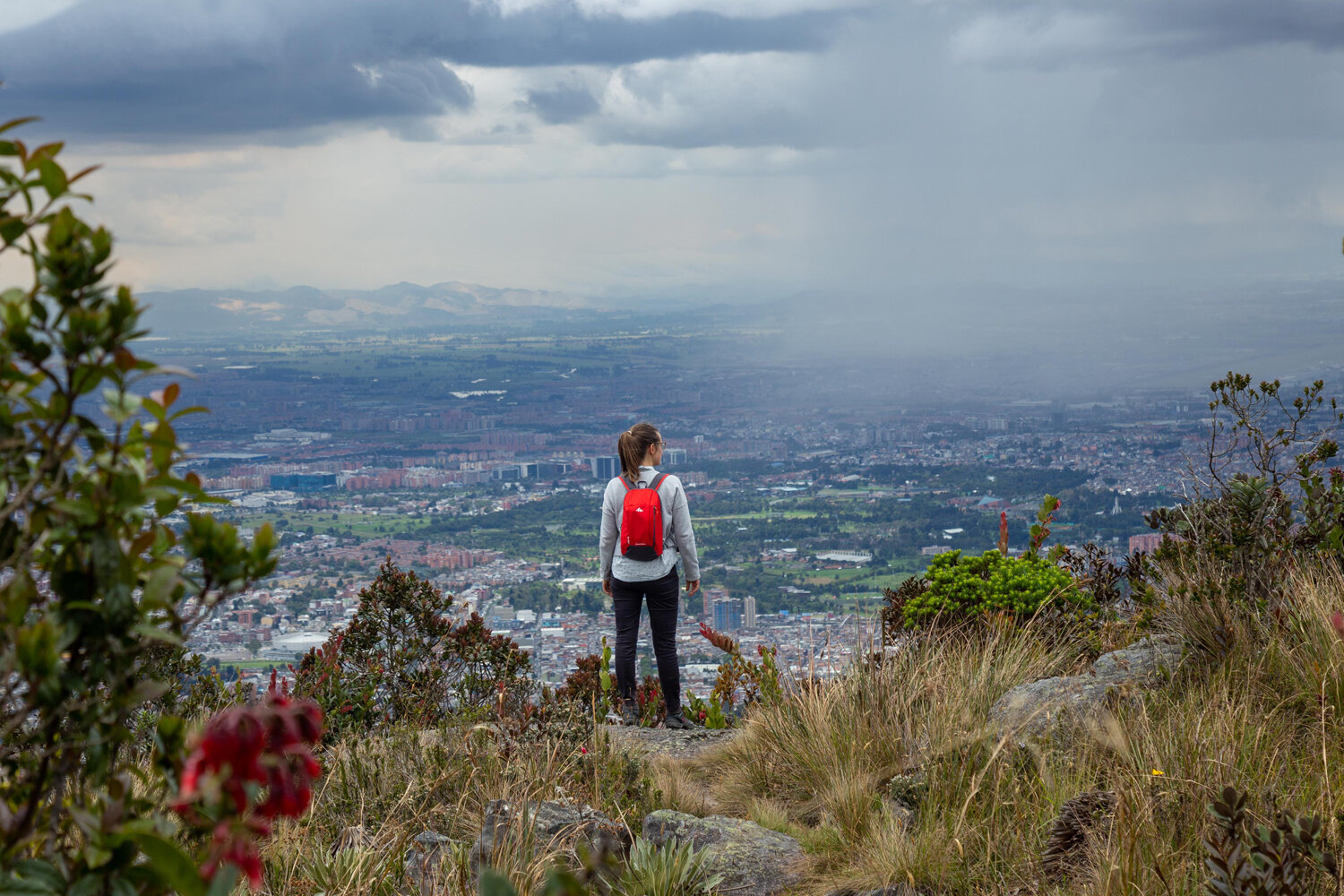

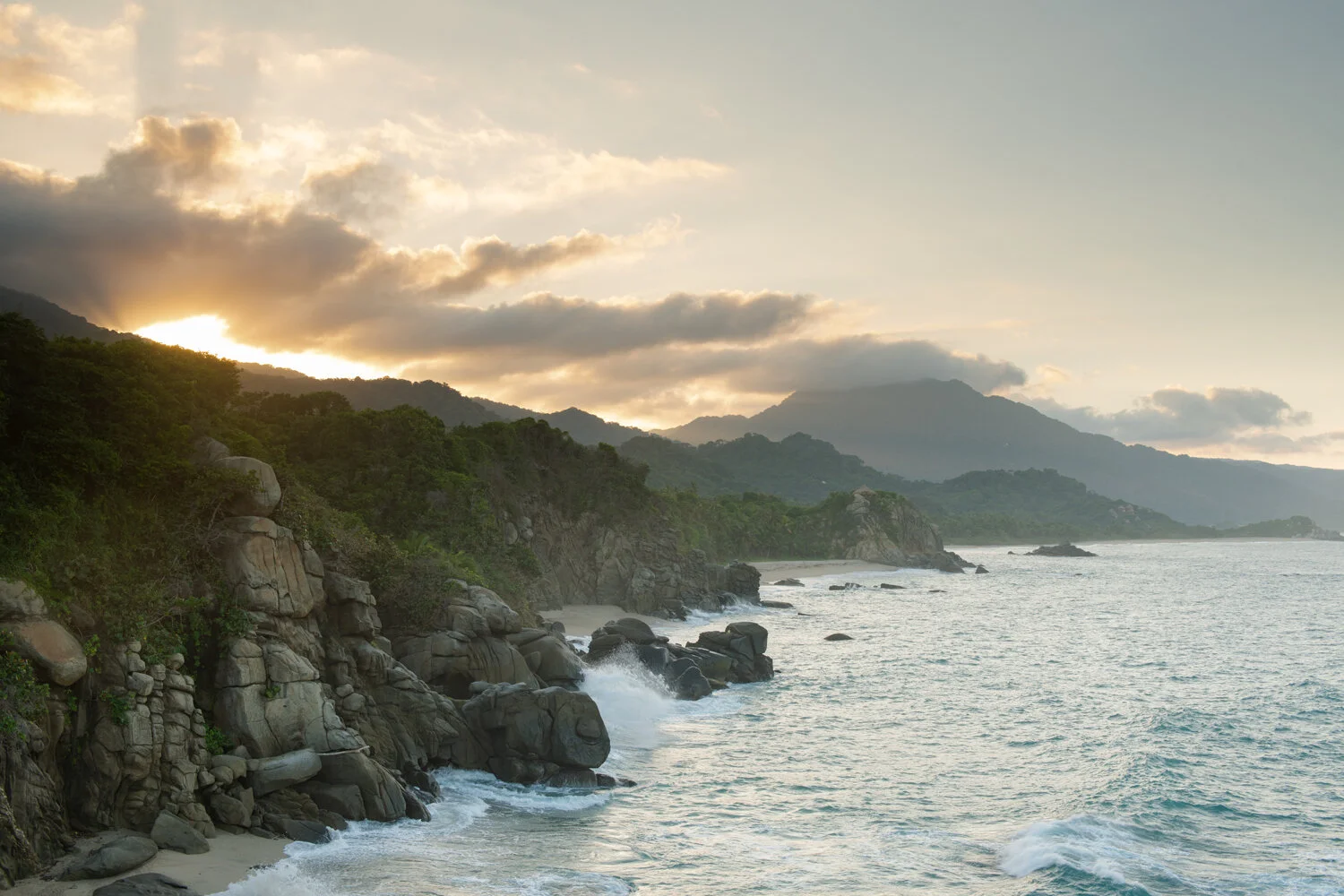




Learn what it takes to successfully execute a birding documentary production, from what to pack to the best gear for filming wild birds in natural conditions.